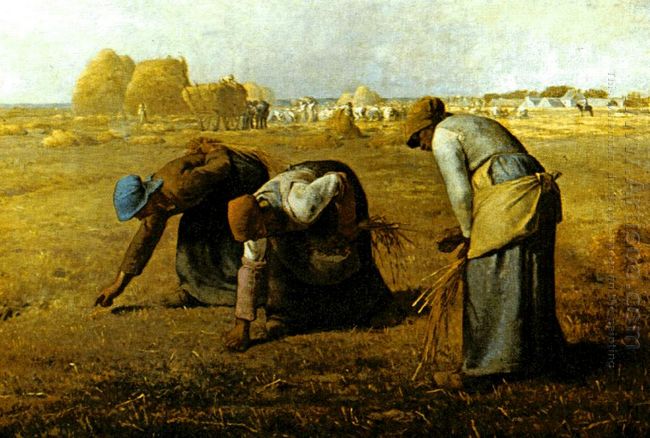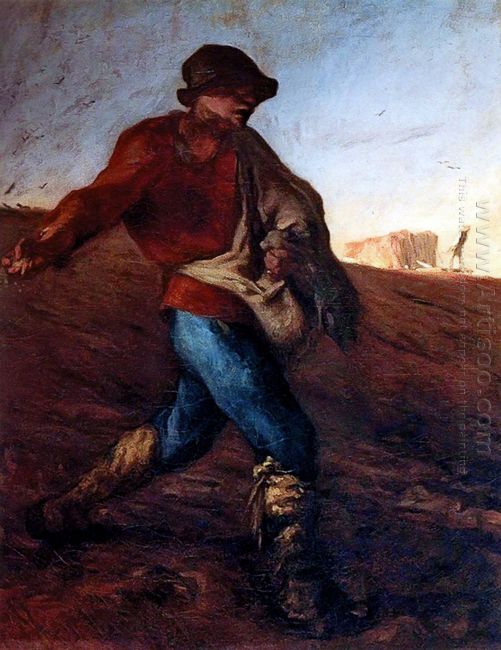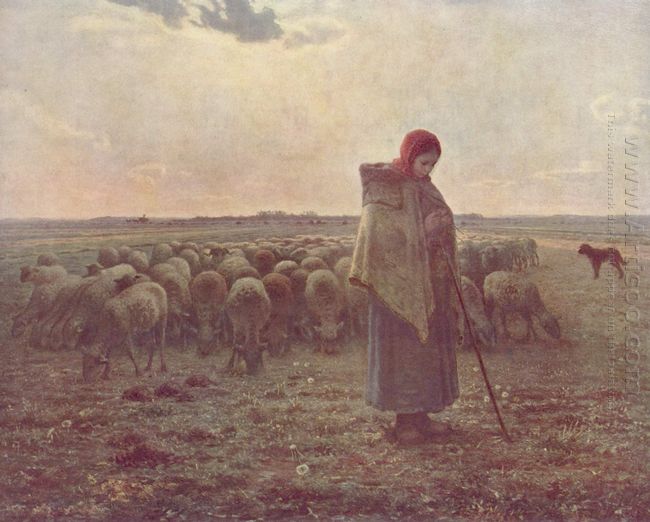The Gleaners is a famous oil painting created by the famous French painter Millet in 1857. This painting describes people picking ears of wheat in the field after autumn harvest. It is a typical representative of realism.
Jean Francois Millet (1814 to 1875), a French realistic painter in the 19th century, is famous for displaying the subject of farmer. His paintings, which are full of strong flavor of rural life, mainly describe the work and life of farmers.
The Gleaners represents a most common scene in the countryside. It is fall; the golden field stretches as far as eye can see. There are three peasant women bending over to pick up ears of wheat carefully in the after-harvest field, in order to supplement food at home, the busy crowd and big grain stack behind seem to have nothing to do with them. However, this piece of plain painting brings the audience an unusual solemn feeling. Although they are just peasant women wearing rough clothes and heavy sabot, large and strong, not beautiful, let alone elegance, Millet makes their postures grave as the classical sculpture with his exquisite technique of drawing.
From the behavior of the three women, we can see they are different in angles but have interlink, just like a gradually diagram of picking up the ears of wheat. The woman in red headscarf is picking quickly with another hand holding a large bunch of ears of wheat in her bag. She has already done this for a long while, since her bag bulges. The woman in blue headscarf is exhausted by bending up and down repeatedly; she put her left hand against her back to support her body. The woman in the right of the picture holding a bunch of wheat looks over the field that they have already done picking to see if there is any ear of wheat left. Millet always uses a cross composition in his picture to make the monument-like characteristics appear on the open field. Although the long-time bending-over has made them exhausted, they are still persisting in picking up the ears of wheat. Although their faces have been hidden, their movements and postures are full of expressions-tolerance, humbleness and loyalty.
This painting shows Millet's sympathy to the farmers and their tough life, it also expresses his love of the countryside.
The skills of the whole painting are extremely simple. All the subjects are really harmonious and the gentle hue is full of various colors, which shows a tempting country view in front of the audience. Although the content of the painting is simple and obvious, it has profound implied meaning instead of being mediocre and shallow, just like the other paintings of Millet.











